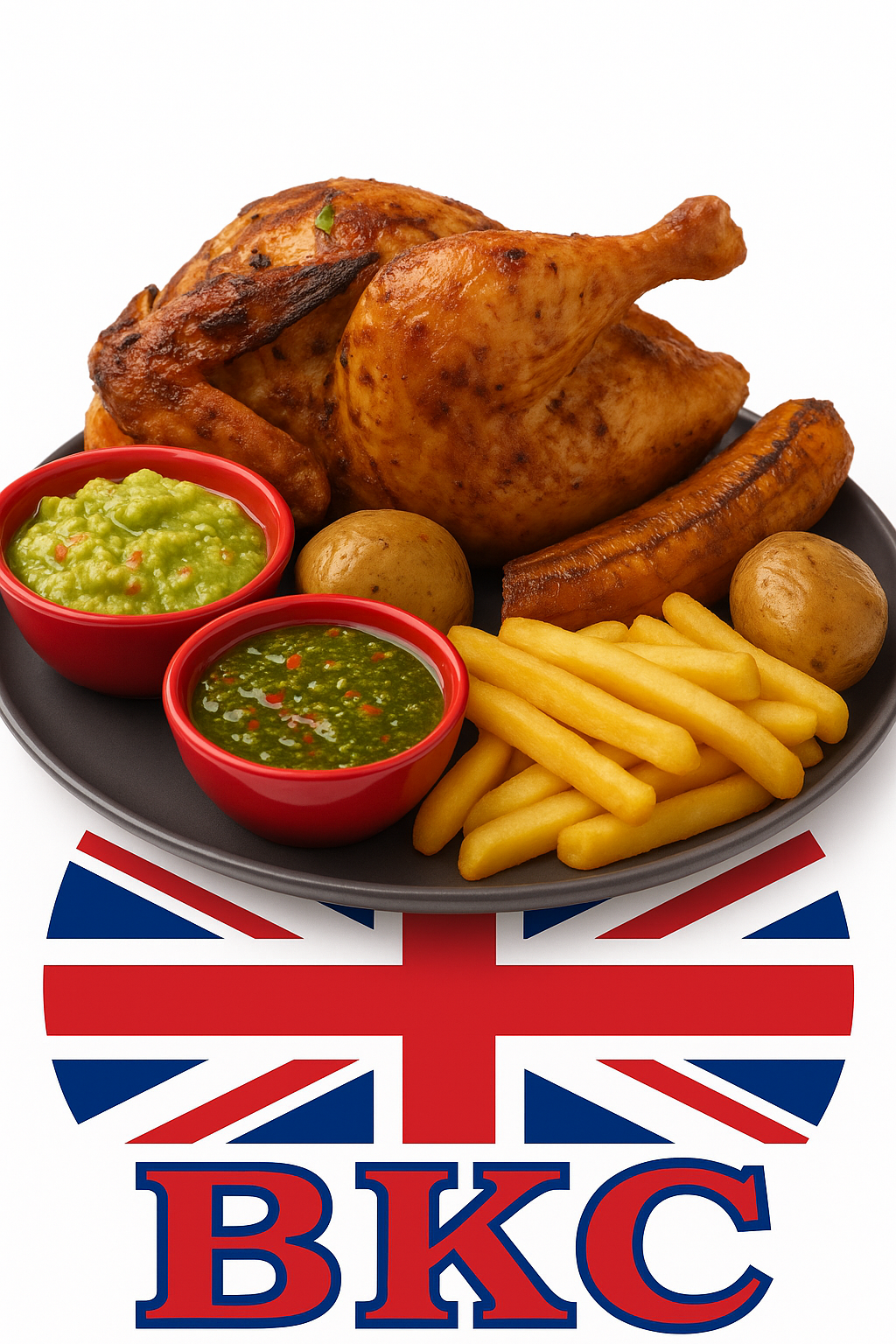Problem-Solving Case Study — Best Krazy Chicken (BKC)
Overview

Best Krazy Chicken (BKC) is a restaurant concept designed to compete with established UK chains by offering Colombian-style wood-fired rotisserie chicken with authentic flavours and traditional side dishes. The goal is to pair strong product quality with a clear, modern digital presence.
Context
BKC features chicken marinated with Colombian spices and roasted slowly over firewood. Side dishes include wood-roasted or fried potatoes, roasted ripe plantain, cassava, and homemade sauces like ají and chimichurri. This fills a gap in the UK market with flavours not currently offered by mainstream competitors.
Challenges & Opportunities
- Challenge: Competing with well-known chains and building brand recognition from scratch.
- Challenge: Communicating a new flavour profile to UK customers.
- Opportunity: Unique Colombian wood-fired taste and efficient rotisserie service for fast delivery.
- Opportunity: Digital channels (website + social) to reach local communities and drive footfall.
Design Choices
The site focuses on clarity and speed: a clean layout with soft sky-blue backgrounds, red pill navigation for clear wayfinding, and consistent iconography in the footer. The hero and BKC visuals use a subtle watermark to reinforce the brand without distracting the content. A new Menu section presents dishes with photos and an accessible accordion (red summary, image left, details right) so guests can quickly scan descriptions in blue and prices in red. Forms are powered by Formspree (no backend needed), with proper focus states and mobile-first responsiveness. Metadata (Open Graph/Twitter) and structured data (Schema.org) improve sharing and basic SEO.
Design Concept for the Problem-Solving Page
The design of the Problem-Solving Page was created to reflect the restaurant’s digital transformation goals: improving customer interaction and simplifying communication. I used a clean and modern layout with clear sections for social media links, contact information, and an interactive booking form. The form allows users to submit booking requests or feedback directly, which demonstrates how web technologies can support real customer engagement. I chose a warm color palette and easy-to-read typography to make the page friendly and professional, reflecting the welcoming atmosphere of a restaurant environment. Overall, the design focuses on usability, clarity, and accessibility while showing my technical ability to combine HTML, CSS, and JavaScript in a functional business context.
Design Concept: Expandable Menu (Arrow/Accordion)
To keep the page lightweight and easy to scan, I designed the restaurant menu as an expandable “arrow/accordion” interface instead of showing every image and price at once. Each category (e.g., Starters, Mains, Desserts, Drinks) is collapsed by default with a clear chevron icon that rotates on open. This approach reduces visual clutter, prevents cognitive overload, and improves mobile usability because visitors only expand what they want to explore. When a section is opened, the customer can see dish photos, descriptions, and prices in context—without scrolling through a long, image-heavy page.
This interaction motivates customers differently: it creates a sense of discovery and control, while keeping the core page fast and focused. It also supports performance and accessibility: fewer images load initially, and content is structured in logical sections that screen readers can navigate. Overall, the expandable arrows help present the menu clearly, highlight prices and options on demand, and deliver a cleaner user experience that aligns with the digital restaurants transformation goals.
Outcome / Results
By loading fewer images initially and revealing content on demand, the accordion menu keeps the page fast and focused. Combined with consistent branding and visible focus states, the experience is easier to scan, more accessible, and more likely to convert first-time visitors into customers.
Social Media & Contact Links
- Facebook: facebook.com/crazzychicken
- Instagram: @crazzychicken
- Email: J.E.CastroCastillo@edu.salford.ac.uk
- Phone: +44 1234 567890